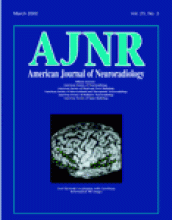Abstract
BACKGROUND AND PURPOSE: True 3D measurements of tumor volume are time-consuming and subject to errors that are particularly pronounced in cases of small tumors. These problems complicate the routine clinical assessment of tumor growth rates. We examined the accuracy of currently available methods of size and growth measurement of vestibular schwannomas compared with that of a novel fast partial volume tissue classification algorithm.
METHODS: Sixty-three patients with unilateral sporadic vestibular schwannomas underwent imaging. Thirty-eight of these patients underwent imaging two or more times at approximately 12-month intervals. Contrast-enhanced 3D T1-weighted images were used for all measurements. An experienced radiologist performed standard size estimations, including maximal diameter, elliptical area, perimeter, manually segmented area, intensity thresholded seeding volume, and manually segmented volume. A method for calculating volume was also used, incorporating Bayesian probability statistics to estimate partial volume effects. Manually segmented volume was obtained as a baseline standard measure. A computer-generated phantom exhibiting the intensity and partial volume characteristics of brain tissue, CSF, and intracanalicular vestibular schwannoma tissue was used to measure absolute accuracy of the standard technique and Bayesian partial volume segmentation.
RESULTS: The Bayesian partial volume segmentation method showed the highest correlation (R2 = 0.994) with the standard method, whereas the commonly used method of maximal diameter measurement showed poor correlation (R2 = 0.732). Accuracy of Bayesian segmentation was shown to be more than twice that of manual segmentation, with an absolute accuracy of 5% (cf, 13%) and a remeasurement accuracy of 70 mm3 (cf, 150 mm3). For the 38 patients who underwent imaging twice, definite tumor growth was shown for 12, potential growth for seven, no growth for 17, and definite shrinkage for two.
CONCLUSION: Commonly used methods such as maximal diameter measurements do not provide adequate statistical accuracy with which to monitor tumor growth in patients with small vestibular schwannomas. Bayesian partial volume segmentation provides a more accurate and rapid method of volume and growth estimation. These differences in measurement accuracy translated into a significant improvement in clinical assessment, allowing identification of tumor growth in 10 of 12 cases that appeared to be static in size when manual segmentation techniques are used. The technique is quick to perform and suitable for use in routine clinical practice.
- Copyright © American Society of Neuroradiology












